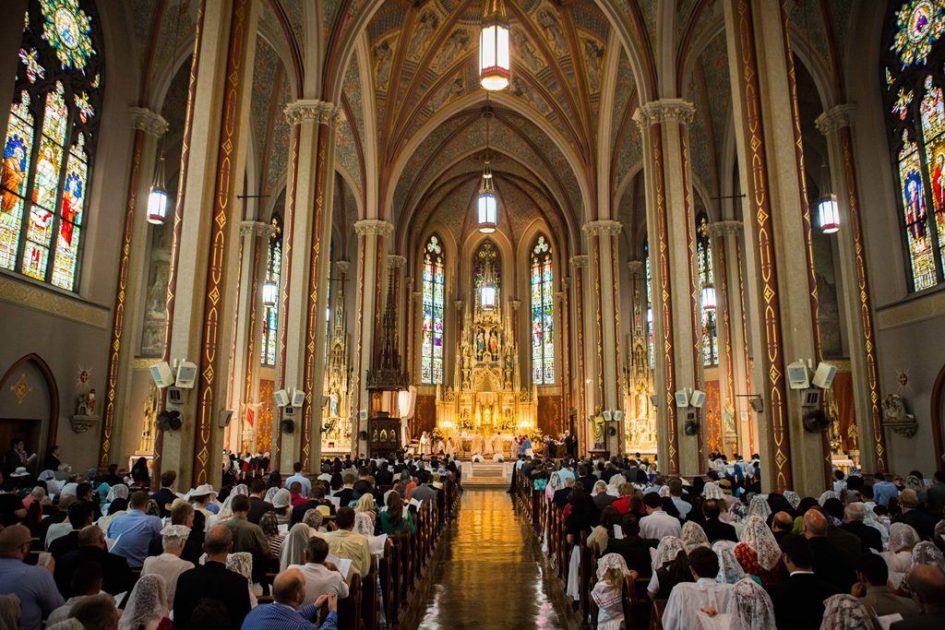There is a lot of beauty in the American Church and there is a theme. Within the span of about 30 years at the beginning of the 20th century, nearly all of the most beautiful churches in the country were built. They were driven by congregations of Poles, Germans, and Irish immigrants mainly and reflected the high Gothic style of the cathedrals of Europe. We should give thanks to these patrons and do our part to preserve the legacy and the beauty that points to Our Heavenly Father and Our Lord Jesus Christ.
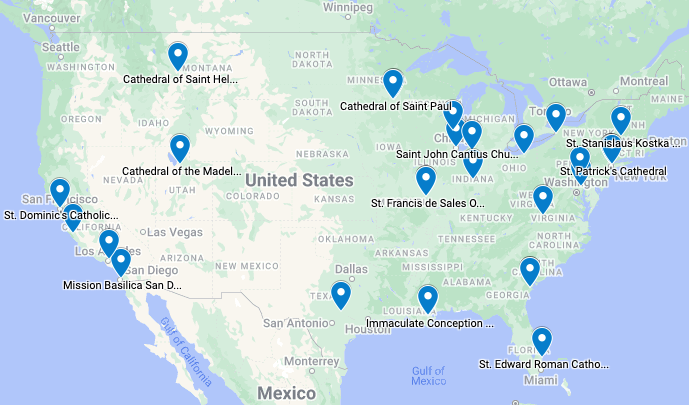
1. St. Francis de Sales Oratory, St. Louis, Missouri

The church is popularly known as the “Cathedral of South St. Louis.” The historic main church was designed in the neo-Gothic style. Its stained glass windows were crafted by the St. Louis glazier Emil Frei, Sr. It has been listed on the National Register of Historic Places. Since 2005 the church has been operated by the Institute of Christ the King Sovereign Priest, which practices the Latin liturgy and emphasizes the liturgical arts, with a strong music program.

2. St. John Cantius, Chicago, Illinois

Known for its solemn liturgies and rich program of sacred art and music, St. John Cantius in Chicago was built by Polish immigrants in the last decade of the 19th century. The parish retained its Polish character for years, but the building of the Kennedy Expressway which cut through the heart of Chicago’s Polonia began a period of decline for the parish as many longtime residents were forced to relocate. The parish was slated for closure as Chicago’s inner city neighborhoods declined further through the 1960s and 70s. A revival of the parish began in the late 1980s by Fr. Frank Phillips, C.R., who became pastor. Fr. Phillips helped to spark a renewal and attract parishioners, as well as financial resources. With improved finances, Fr. Phillips could begin restoring the physical church to its original glory while preserving the many treasures the parish already had.

3. Cathedral Basilica of Saint Louis, St. Louis, Missouri

Planning began as early as the 1870s, but construction formally wasn’t started until 1907 with dedication 1914 and full consecration June 29, 1926. Completion of the cathedral’s mosaics was not accomplished until 1988. The grounds of the Cathedral also contain the distinctive circular Chancery Building, circa 1965, designed by the Peruvian-American modernist architect Wenceslaus Sarmiento.


4. St. Patrick’s Cathedral, New York, New York

Work began on this enormous decorated Neo-Gothic cathedral in 1858 but was halted during the Civil War and resumed in 1865. The cathedral was completed in 1878 and dedicated on May 25, 1879. The Roman artist Paolo Medici designed the Saint Elizabeth altar. The Saint Jean-Baptiste de La Salle altar, one of the few original side-chapel altars, was sculpted by Dominic Borgia. The Papal bull is featured in the adjoining stained-glass window. Tiffany & Co. designed the Saint Louis and the Saint Michael altar.

5. Basilica of St. Josaphat, Milwaukee, Wisconsin

St. Josaphat’s congregation was founded in 1888 by immigrant Poles on Milwaukee’s (then) far south side. In 1896, when the parish church proved to be too small, Pastor Wilhelm Grutza commissioned a prominent church architect of the late 19th and early 20th centuries, Erhard Brielmaier. Like a number of other Polish churches in the so-called Polish Cathedral style, such as St. Mary of the Angels in Chicago or Immaculate Heart of Mary in Pittsburgh, the architectural plans for the new edifice were intentionally modeled on St. Peter’s Basilica. In 1929, Pope Pius XI designated St. Josaphat Church as the third minor basilica in the United States, marking it as a place of pilgrimage, special devotion, and historical significance.

6. The National Shrine of Saint Alphonsus Liguori, Baltimore, Maryland

The church is based on the design of St. Stephen’s Cathedral in Vienna and follows a basilica floorplan. The structure is constructed of red brick with limestone accents in the Gothic Revival style. The nave reaches a height of 50 ft (15 m) and the ornate steeple rises 210 ft (64 m) above the three-level bell tower. A 12 ft (3.7 m) gold cross caps the steeple. Since 1992, the parish has held regular Tridentine Masses. It is currently administered by the Priestly Fraternity of Saint Peter.

7. Immaculate Conception, New Orleans, Louisiana

Immaculate Conception church was built and designed in the Neo-Venetian Gothic style of Gothic Revival architecture, with Moorish Revival and Byzantine Revival elements. Two Immaculate Conception churches, nearly identical to each other, were built on the same site over time. The first church was designed by Fr. John Cambiaso, S.J., and completed in 1857. In the late 1920s, it suffered foundation damage due to the construction of the Pere Marquette building. The church’s floor split in half. The building was disassembled in 1928. New footings at the same site were laid in 1929 with the cornerstone laid on 16 May 1929. The new church building, incorporating many fixtures from the older church, was dedicated on 2 March 1930.

8. Basilica of the Sacred Heart, Notre Dame, Indiana

Work on the foundations for the new church began in the spring of 1870, and the cornerstone was laid on 31 May 1871, with six bishops present, including Cincinnati Archbishop John Purcell. The building took many years to finish and underwent many changes. As soon as it was inhabitable, university leaders installed an organ and held functions and celebrations in the unfinished building. Bishop Joseph Gregory Dwenger finally consecrated the new sanctuary on 15 August 1888. The neo-gothic church has 44 large stained glass windows and murals completed over a 17-year period by the Vatican painter Luigi Gregori. The basilica bell tower is 230 feet (70 m) high, making it the tallest University chapel in America. It is a contributing building in Notre Dame’s historic district listed on the National Register of Historic Places.

9. Our Lady of Victory, Lackawanna, New York

Completed in 1926 to replace the fire-damaged St. Patrick, Our Lady of Victory Basilica was designed by Emile Ulrich with a great dome and twin towers. Due to the multiple charities of founder Father Nelson Baker, the shrine is a popular pilgrimage and visitor destination in Lackawanna. It is part of the Diocese of Buffalo.

10. Cathedral of St. John the Baptist, Savannah, Georgia

The colonial charter of Savannah prohibited Roman Catholics from settling in the city. The English trustees feared that Catholics would be more loyal to the Spanish authorities in Florida than to the English government in Georgia, however this prohibition faded shortly after the American Revolution. On February 6, 1898, a fire swept the building and left only the walls and towers, however the congregation quickly rebuilt and was able to celebrate Christmas Mass in the new facility in 1899. But again, the structure was not complete and interior decoration took an additional 13 years. Stained glass windows were installed around 1904.

Honorable mention:
St. Dominic, San Francisco, California

Cathedral of St. Paul, St. Paul, Minnesota

Immaculate Conception, York, Pennsylvania

Cathedral of the Madeleine, Salt Lake City, Utah

St. Stanislas, Cleveland, Ohio

St. Andrew, Roanoke, Virginia

Mission de Alcala, San Diego, California

St. Louis Cathedral, New Orleans, Louisiana
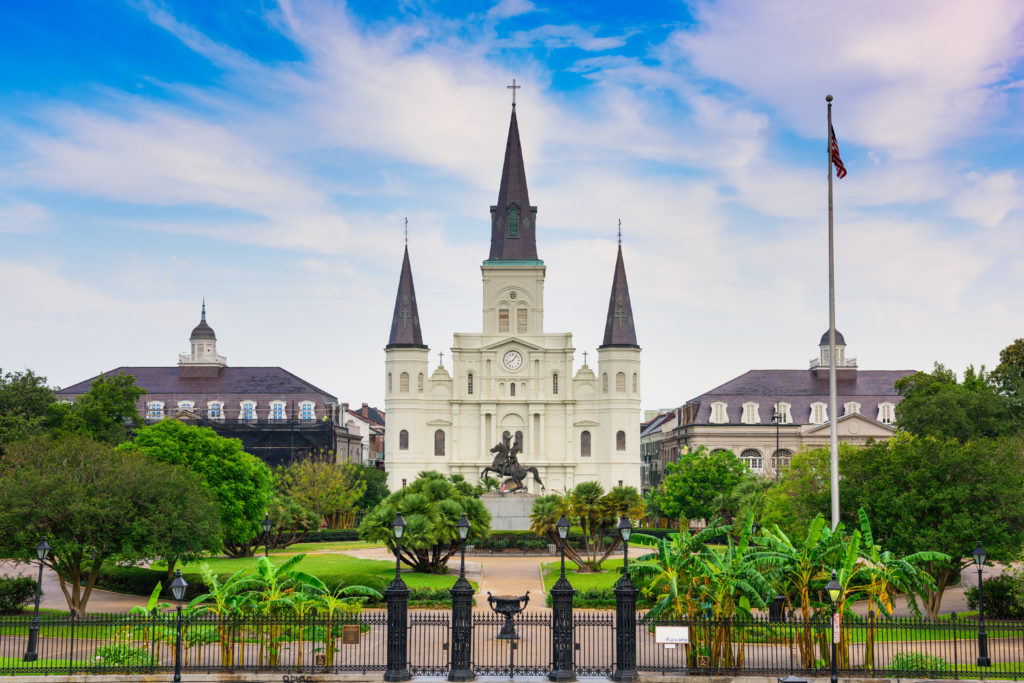
St. Jean Baptiste Church, New York, New York

St. Stanislaus Kotska, Adams, Massachusetts

St. Andrew, Pasadena, California
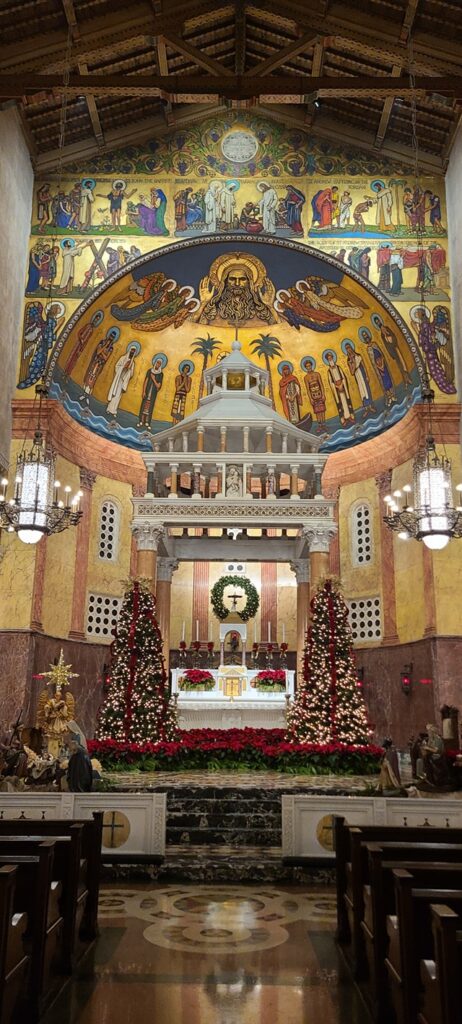
St. John the Evangelist, Indianapolis, Indiana

St. Mary Cathedral, Austin, Texas

Our Lady of Good Counsel, New York, New York

St. Agnes, St. Paul, Minnesota

St. Joseph, New Orleans, Louisiana

Cathedral of St. Helena, Helena, Montanna

Mission San Antonio de Padua, Jolon, California

St. Edward, Palm Beach, Florida

Sweetest Heart of Mary Church, Detroit, Michigan
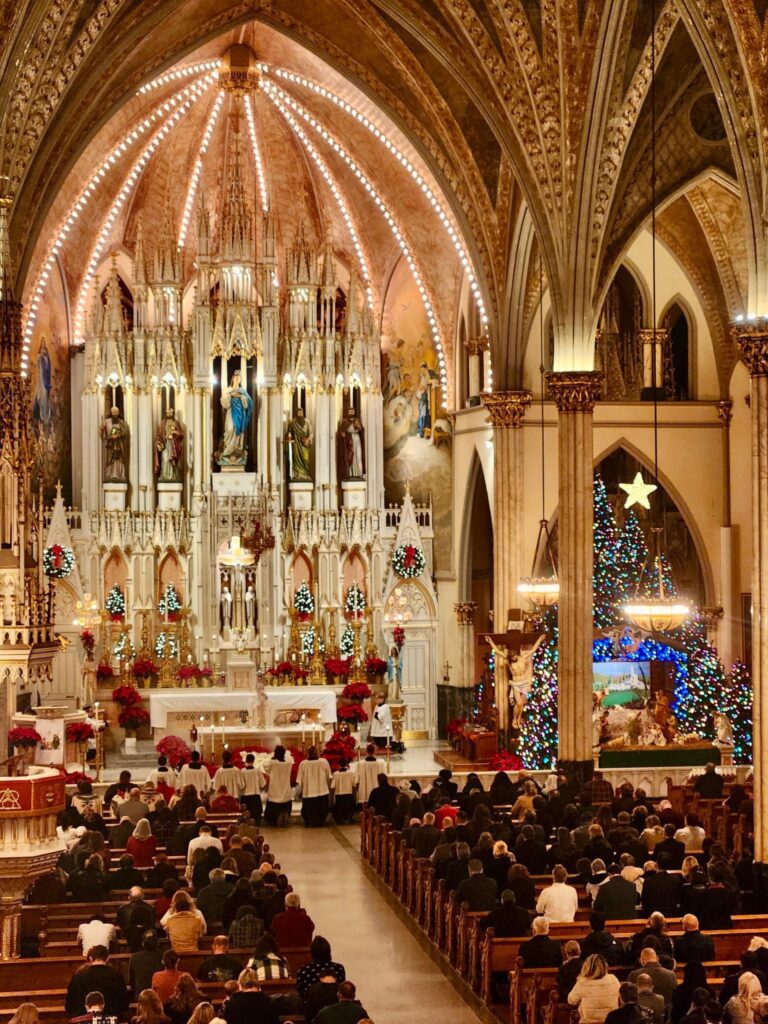
Based on a poll in the FB group I’m fed up with ugly churches.
 The Libertarian Catholic
The Libertarian Catholic